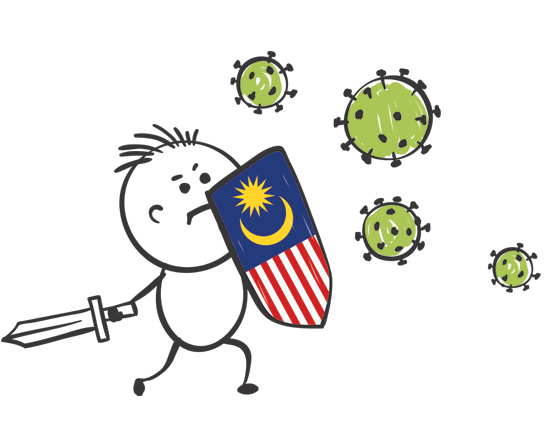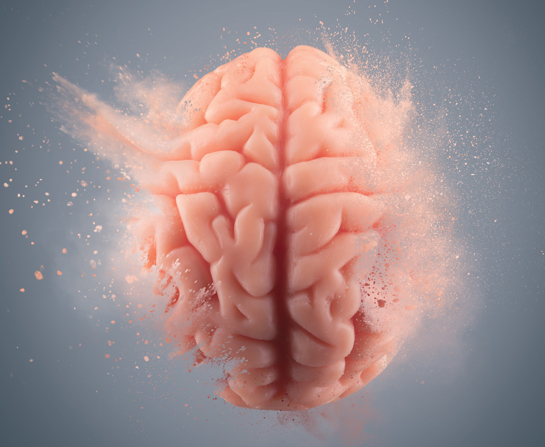Healing A Hurt Heel
May 8, 2022 Return

Words Dr Au Yong Pui San
The plantar fascia is a thick fibrous band of tissue that stretches from the inner underside of the heel bone to the base of the toes. It provides support to the arch of the foot.
When there is too much stress to the plantar fascia, it can become inflamed, thickened and swollen, causing pain on the heel or along the arch of the foot. This condition is called plantar fasciitis (pronounced fash-ee-ai-tis).
The condition is commonly associated with overuse and usually occurs slowly. Typically, the usual complaint will be pain at the heel, especially upon waking up in the morning and taking the first step out of bed. Similarly, there will be pain in the heel during the first step after a period of prolonged immobilization (for eg, sitting in a car for a long journey or after a movie marathon).
Early in this condition, the pain eases after walking around but if it is left untreated, the pain worsens and lingers throughout the day.
WHAT CAUSES IT?
Some people are more prone to developing this condition, such as those with high body mass index, are flat footed, have overpronation of the feet and very tight calves (typical of people who do not stretch on a regular basis and people who love wearing high heels).
In the more athletic population, especially runners, common predisposing factors that may lead to the road of prolonged pain and (most times debilitating) discomfort of plantar fasciitis are:
- Poor running biomechanics (or running form), where there is over pronation of feet and/or too much heel strike during running gait. This places a lot of stress onto the plantar fascia leading to irritation and inflammation.
- Poor choice of footwear, where a person uses the wrong type of footwear for his or her foot type or body type, or there is inadequate support from the footwear. For larger sized runners who are just starting to enter the fascinating world of running and road racing, picking a pair of shoes with enough cushioning and support is important. With the minimalist types of running shoes still in vogue, a sudden change to shoes with low heel-to-toe drop without adequate adaptation to the shoes will place a high amount of stress to the plantar fascia.
- Tight calves from inadequate stretching (or none!). Stretching post run is highly recommended if not pivotal to the prevention of many overuse injuries, including plantar fasciitis.
- Weak calves, just like tight calves, are also contributing factors to developing plantar fasciitis. A lot of runners feel that running is the only exercise necessary to build muscles in the legs, thus forgoing strengthening exercises.
- Running surfaces also play a role. Running on tar roads and cemented sidewalks (which unfortunately most runners do) leads to high impact on foot strike landing which leads in turn to higher stress on the plantar fascia.
- The dreaded “too’s”, which is too much, too soon, too often. Sudden increment in mileage without adequate rest will most often lead to unwanted aches and pains. One of them very likely could be plantar fasciitis.
- Speedwork and hill repeats. Related to “too much, too soon and too often”, adding on too much speedwork and hill repeats can also lead to heel pain.
WHAT CAN I DO?
If you experience such heel pain and it is causing you much grievance when you run, there are a few things that you can do to ease the discomfort and return to running in a timely fashion.
First, you need to make sure it really is plantar fasciitis. There are other ailments that can mimic plantar fasciitis, especially in the non athletic population. The best way to confirm the diagnosis (after your doctor goes through your medical history and physical examination) is to do an ultrasound scan of the plantar fascia, which should show that the fascia is visibly thickened and swollen. An x-ray may show heel spurs but that rarely is the cause of heel pain. There are many people with heel spurs that do nat have heel pain, just as there are many people with heel pain that do not have heel spurs.
If you are a runner and had committed the above causal factors that may have led to plantar fasciitis, then correcting them is the first step to reducing your likelihood of heel pain.
- Icing after a run, walk or even prolonged standing.
- Using proper footwear with adequate cushioning and support. You may consider inserting silicone insoles to reduce the pressure on the heels or insoles that help reduce flat footedness.
- Stretching of both the plantar fascia and your calves. Rolling the painful foot over a tennis ball or a golf ball helps to stretch the plantar fascia and may provide a lot of relief upon your first step out of bed. Ideally, this is done the moment you wake up.
- Strengthening of intrinsic foot muscles and calf muscles. The stronger the muscles, the better you are at preventing re-injury.
- Adding softer running surfaces such as a rubberized track, grassy field or less technical trail to your routine.
- Pulling back on the mileage up to 50 percent and taking a break on speedwork and hill repeats, while letting the pain ease off. Once the pain resolves, you can add the mileage back slowly (key word: slowly). Cross training (for eg, cycling, swimming, aqua-running) can be a great option to maintain cardiovascular fitness while easing off pressure on the foot.
Other treatments that can be done include:
- Soft tissue therapy (or myofascial release therapy) can be performed on the plantar fascia, calf muscles, hamstrings and glute muscles.
- Night splint worn during sleep to keep the plantar fascia (and calf muscles, to some degree) stretched throughout the night.
- Taping of the plantar fascia and the calf muscles.
- Topical and/or oral analgesia. (However, these are not recommended to be taken when exercising.)
If all the above conservative management does not help, your options are:
- Corticosteroid injection, ideally done under ultrasound guidance to prevent injecting directly into the plantar fascia. Corticosteroid, while useful in reducing inflammation quickly, can weaken the plantar fascia and may cause it to tear or rupture especiallyin the athletic population. With ultrasound guidance, the corticosteroid will be injected along the surface of the fascia.
- Surgery, only in stubborn or difficult cases where there is still pain but all conservative management efforts have been tried to no avail. Note that surgery is not ideal for the athletic population. HT















